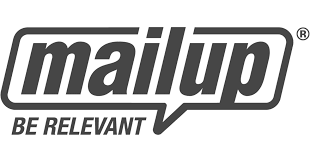Welcome to the ultimate face-off between two email marketing titans: HubSpot Email Marketing and MailUp. In today’s fast-paced digital world, where every click can make or break your business, choosing the right email marketing tool is like selecting the perfect tool for a master craftsman. It can mean the difference between a thriving email campaign and one that fizzles out.
In this comprehensive guide, we’ll dissect, analyze, and compare every facet of HubSpot Email Marketing and MailUp. Our mission is to provide you with the insights you need to make an informed decision. Let’s kick off this email marketing showdown by diving into a pivotal area of comparison.
| HubSpot Email Marketing | MailUp |
|---|---|
 |  |
| G2 Score – 4.4 out of 5 stars | G2 Score – 3.7 out of 5 stars |
| TrustRadius Score – 8.5 out of 10 | TrustRadius Score – 6.0 out of 10 |
Deliverability: Ensuring Your Emails Land in the Inbox
HubSpot Email Marketing: The Trusty Mail Carrier
HubSpot Email Marketing has built a solid reputation when it comes to email deliverability. Think of it as the trusty mail carrier who knows all the shortcuts to get your message to its destination. The platform’s infrastructure is built on trusted servers with established sending protocols, which means your emails are less likely to get flagged as spam. What’s more, HubSpot offers dedicated IP addresses for users with high sending volumes. This allows for more control over email delivery and is especially important for businesses that rely heavily on email as a primary communication channel.
MailUp: The Email Whisperer
MailUp, while perhaps not as widely recognized as HubSpot, has a unique approach to email deliverability. It’s like having an email whisperer who knows just the right words to get your emails into the inbox. The platform provides tools and features that empower users to monitor and improve email deliverability actively. MailUp’s commitment to enhancing deliverability includes features like A/B testing, spam checkers, and list hygiene tools. These functionalities enable users to optimize their email campaigns for maximum reach and engagement.
Comparison Summary
Both HubSpot Email Marketing and MailUp offer robust solutions when it comes to email deliverability, but they do so in different ways. HubSpot relies on its established infrastructure and reputation to ensure your emails are trusted by email service providers. MailUp, on the other hand, equips users with a set of tools and strategies to actively manage and enhance deliverability. It’s an excellent choice for businesses that want more control over their email delivery process.
Your choice should depend on your business’s specific needs and your level of involvement in email deliverability management. If you prefer a platform with a strong reputation and a “set it and forget it” approach, HubSpot is the way to go. If you want to take a hands-on approach to deliverability and actively optimize your email campaigns, MailUp is a strong contender.
Email Campaign Creation: Crafting the Perfect Message
HubSpot Email Marketing: The Creative Playground
HubSpot Email Marketing provides a creative playground for designing email campaigns that captivate your audience. Imagine a canvas where you can paint your email masterpiece; that’s what HubSpot offers. The platform comes equipped with an array of professionally designed email templates, catering to various industries and styles. What sets HubSpot apart is its drag-and-drop email builder, making it a breeze to create visually stunning emails without any coding expertise. You can customize templates to match your brand’s identity, adjust layouts, fonts, and colors, and even add dynamic content for personalized messages.
MailUp: Simplicity with Power
MailUp follows a philosophy of simplicity with power. It’s like having a versatile toolbox with just the right tools for the job. The platform provides a user-friendly email editor that simplifies the email creation process. While it may not have the extensive template gallery of HubSpot, it compensates with flexibility and ease of use. MailUp’s email editor allows for easy customization of templates, and you can design responsive emails that look great on both desktop and mobile devices. Its simplicity makes it a practical choice for users who want to create effective email campaigns without getting bogged down by complexity.
Comparison Summary
In the realm of email campaign creation, HubSpot Email Marketing and MailUp cater to different preferences. HubSpot shines with its extensive template gallery and advanced customization capabilities, ideal for businesses that prioritize aesthetics and branding. MailUp, on the other hand, offers simplicity and ease of use, allowing users to create effective email campaigns without a steep learning curve. It’s an excellent choice for those who value straightforward email creation.
Your choice should align with your business’s design requirements and your level of expertise. If you prefer a platform with a vast template gallery and advanced customization, HubSpot is the way to go. If you’re looking for simplicity and a user-friendly interface, MailUp is a strong contender.
Automation and Workflow Capabilities: Streamlining Email Campaigns
HubSpot Email Marketing: Advanced Automation for Personalized Journeys
HubSpot Email Marketing is a master of automation, orchestrating your email campaigns with precision. Imagine having a skilled conductor directing an orchestra; that’s the level of control HubSpot provides. The platform’s advanced automation tools allow you to set up trigger-based workflows that respond to specific actions or behaviors of your contacts.
This level of automation is deeply integrated with the HubSpot CRM, enabling you to create highly targeted campaigns. You can automate emails based on customer lifecycle stages, past interactions, or preferences, ensuring that each message is relevant and timely. This functionality is key for nurturing leads, segmenting audiences, and ultimately, driving conversions.
MailUp: Automation for Efficiency
MailUp also offers automation capabilities that focus on efficiency. It’s like having a reliable assistant who takes care of routine tasks. The platform allows you to create automated email campaigns triggered by events such as sign-ups, purchases, or specific behaviors. While MailUp’s automation may not be as intricate as HubSpot’s, it is well-suited for businesses seeking to streamline their email marketing efforts. It simplifies tasks and ensures that your emails are sent to the right people at the right time.
Comparison Summary
In the realm of automation and workflow capabilities, HubSpot and MailUp cater to different needs. HubSpot excels in creating personalized email marketing campaigns with its sophisticated CRM integration and advanced automation tools. It’s ideal for businesses looking to deliver highly tailored messages to their audience. MailUp, on the other hand, offers efficient automation for businesses seeking to streamline their email marketing processes. It simplifies routine tasks and ensures that campaigns are triggered based on specific events.
Your decision should be guided by the complexity of your marketing campaigns and your preference for customization. If you require deep personalization and integration with CRM data, HubSpot is the preferable choice. If your focus is on efficiency and automation of routine tasks, MailUp is a strong contender.
Analytics and Reporting: Measuring Campaign Effectiveness
HubSpot Email Marketing: Comprehensive Analytics
HubSpot Email Marketing offers a robust analytics and reporting system, akin to a high-powered microscope that lets you examine the minutiae of your email campaigns. With HubSpot, you gain access to a wide array of metrics, including open rates, click-through rates, and conversion rates, all presented in a user-friendly, detailed manner. The platform goes beyond basic analytics by integrating with the CRM, enabling you to track the customer journey and see how email interactions contribute to broader marketing goals. This level of detail is invaluable for optimizing your campaigns, understanding customer behavior, and improving ROI.
MailUp: Insights for Informed Decisions
MailUp provides essential analytics to help you make informed decisions about your email marketing efforts. It’s like having a compass that points you in the right direction. The platform offers insights into key metrics such as open rates, click-through rates, and unsubscribe rates, allowing you to gauge the performance of your campaigns. While MailUp may not provide the same depth of analytics as HubSpot, it offers valuable data to assess the effectiveness of your email marketing strategies. The platform also integrates with Google Analytics, enhancing your ability to track website visits generated from email campaigns.
Comparison Summary
In terms of analytics and reporting, both HubSpot Email Marketing and MailUp offer valuable insights, albeit with different scopes. HubSpot is ideal for businesses that need in-depth, CRM-integrated analytics to inform their email marketing strategies as part of a larger marketing initiative. MailUp, on the other hand, provides essential analytics for businesses seeking to assess the performance of their email campaigns. It’s a practical choice for those looking for straightforward insights without the complexity of advanced data.
Your choice should depend on the level of analytical depth you require and your overall marketing strategy. If you need detailed, CRM-focused analytics for email marketing, HubSpot is the better option. If you’re looking for practical, essential insights, MailUp is a strong contender.

Related: Check out our free SEO suite

Integration and Compatibility: Expanding Marketing Capabilities
HubSpot Email Marketing: Extensive Integrations
HubSpot Email Marketing stands out for its extensive integration capabilities, much like a versatile toolbox that fits seamlessly into a wide range of marketing ecosystems. The platform offers integrations with a vast array of tools and services, including CRM systems, social media platforms, content management systems, and e-commerce solutions.
These integrations facilitate a smooth flow of data across various marketing channels, enhancing the overall effectiveness of your campaigns. Whether it’s syncing customer data from your CRM to personalize emails or connecting with e-commerce platforms to tailor messages based on purchasing behavior, HubSpot’s integrations add significant value to your marketing strategies.
MailUp: Integration Essentials
MailUp provides essential integrations that are crucial for effective email marketing, especially when combined with its omnichannel approach. The platform emphasizes key integrations that support email marketing and customer engagement, including CRM integration and connections to popular e-commerce platforms.
While MailUp may not offer the same breadth of integrations as HubSpot, it ensures that its core integrations are efficient and effective, contributing to a seamless email marketing experience. These integrations are designed to enhance the platform’s core functionalities, allowing businesses to automate and streamline their marketing efforts.
Comparison Summary
In terms of integration and compatibility, HubSpot and MailUp cater to different requirements. HubSpot is ideal for businesses seeking a comprehensive solution with extensive integration capabilities, allowing for a high degree of automation and data synchronization across multiple platforms. MailUp, on the other hand, offers a more focused set of integrations, catering to the essential needs of email marketing and omnichannel engagement. Its approach is more about efficiency and simplicity, ensuring that users have access to the key integrations that support their marketing efforts.
Your choice between the two should depend on the scope and nature of the integrations your business requires. If you need a tool that can integrate widely across a variety of platforms and services, HubSpot is an excellent choice. If your focus is on core integrations that are crucial for your email marketing and CRM needs, MailUp Engagement Cloud would be more appropriate.
Customer Support and Training: Getting the Help You Need
HubSpot Email Marketing: Extensive Support Resources
HubSpot Email Marketing offers an extensive support ecosystem, akin to having an entire library of resources at your disposal. The platform provides a knowledge base with articles, guides, and tutorials that cover a wide range of topics, from email marketing best practices to advanced automation techniques. What sets HubSpot apart is its active user community and dedicated customer support channels. Users can access a community forum to ask questions, share experiences, and learn from fellow marketers. Additionally, HubSpot offers email and chat support, ensuring that users can get timely assistance when they encounter issues or have questions.
MailUp: Personalized Support
MailUp takes a more personalized approach to customer support, much like having a dedicated mentor to guide you. The platform offers one-on-one onboarding sessions, where users can get personalized training to kickstart their email marketing journey effectively. In addition to onboarding sessions, MailUp provides email support to assist users with any questions or challenges they encounter. While it may not have the same extensive library of resources as HubSpot, MailUp’s emphasis on personalized training and support ensures that users have a helping hand when needed.
Comparison Summary
In terms of customer support and training, HubSpot and MailUp offer different approaches to meet users’ needs. HubSpot excels in providing a wealth of resources, an active community, and multiple support channels, making it suitable for users who prefer a self-service approach or require extensive documentation. MailUp, on the other hand, focuses on personalized support, offering one-on-one onboarding sessions and email support. This approach is ideal for users who value hands-on guidance and assistance.
Your choice should depend on your preferred style of learning and your need for personalized guidance. If you prefer a platform with extensive self-service resources and an active community, HubSpot is the way to go. If you value personalized onboarding and direct support, MailUp is a strong contender.
Pricing: Finding the Right Fit for Your Budget
| HubSpot Email Marketing | HubSpot’s email marketing tool is part of the HubSpot Marketing Hub, which offers the following plans: Free Tools: Basic email marketing features with HubSpot branding. Starter Plan: Starting at $45/month, includes email marketing, ad management, landing pages, forms, and more. Professional Plan: Starting at $800/month, offers advanced marketing automation, smart content, and A/B testing. Enterprise Plan: Starting at $3,200/month, adds features like adaptive testing, advanced reporting, and custom event triggers. |
| MailUp | Pay Per Speed Plans: MailUp’s pricing is based on sending speed rather than the number of contacts. Starts at around $65/month for the slowest sending speed. Monthly Plans: Also offers traditional monthly plans based on the number of emails sent, with prices starting at around $85/month for up to 400,000 sends. Prepaid Credits: Alternatively, you can buy prepaid credits for sending emails without a monthly fee. All plans include features like email automation, transactional emails, and analytics. |
HubSpot Email Marketing: Tiered Pricing
HubSpot Email Marketing follows a tiered pricing model, offering multiple plans to cater to various business sizes and needs. The platform provides a free plan with basic email marketing features, making it accessible to startups and small businesses. As you scale up, HubSpot offers paid plans with additional features, including advanced automation, reporting, and integrations. While HubSpot’s paid plans offer comprehensive marketing tools beyond email, the pricing can become steep for larger enterprises with more extensive marketing requirements. However, the flexibility of choosing plans based on your specific needs ensures you only pay for what you use.
MailUp: Transparent Pricing
MailUp takes a transparent approach to pricing, providing users with a clear breakdown of costs. The platform offers pricing based on the number of emails sent, making it scalable and budget-friendly for businesses of all sizes. This pay-as-you-go model ensures that you only pay for the emails you send, making it cost-effective for smaller businesses. MailUp also offers a free plan with basic email marketing features, making it an attractive option for startups and small businesses looking to get started with email marketing without a financial commitment.
Comparison Summary
When it comes to pricing, HubSpot Email Marketing and MailUp adopt different models to accommodate various business budgets. HubSpot offers tiered pricing with a range of features, suitable for businesses of all sizes but potentially becoming costly for larger enterprises. MailUp, on the other hand, provides transparent pricing based on email volume, making it budget-friendly and scalable. Its pay-as-you-go model ensures that you only pay for what you use, making it an attractive choice for small to medium-sized businesses.
Your choice should depend on your budget and the scalability of your email marketing needs. If you prefer a platform with a range of marketing tools and can afford the pricing tiers, HubSpot is a comprehensive option. If you’re looking for transparent, scalable pricing that aligns with your email volume, MailUp is a strong contender.
Security and Compliance: Protecting Your Data and Reputation
HubSpot Email Marketing: Robust Security Measures
HubSpot Email Marketing places a strong emphasis on data security, similar to a vigilant guard protecting your most valuable assets. The platform complies with industry standards and regulations, including GDPR and HIPAA, to ensure that customer data is handled securely and in accordance with privacy laws. HubSpot’s infrastructure includes multiple layers of security, encryption, and regular security audits. The platform also offers tools and features for users to maintain compliance and protect their email recipients’ data.
MailUp: GDPR Compliance
MailUp prioritizes GDPR compliance, especially given its European origins. The platform takes data protection seriously and ensures that user data is handled in accordance with the GDPR’s stringent requirements. While MailUp may not offer the same level of security features as HubSpot, its focus on GDPR compliance and data protection aligns with the needs of businesses operating in the European Union and those concerned with data privacy.
Comparison Summary
Both HubSpot Email Marketing and MailUp prioritize data security and compliance, albeit with different focuses. HubSpot offers a broader range of security features and compliance measures, making it suitable for businesses operating in various regions and industries. MailUp, on the other hand, places a strong emphasis on GDPR compliance, making it an excellent choice for businesses that need to adhere to European data protection regulations.
Your choice should depend on your specific data security and compliance requirements. If you operate in multiple regions and need a comprehensive set of security features, HubSpot is a solid choice. If GDPR compliance is a top priority for your business, MailUp is a strong contender.
Conclusion
In conclusion, HubSpot Email Marketing and MailUp each offer unique strengths that cater to different business needs. HubSpot excels in email campaign creation with its creative templates and advanced customization options, making it ideal for businesses that prioritize aesthetics. Its extensive automation capabilities and comprehensive analytics support personalized, data-driven marketing strategies.
On the other hand, MailUp provides a simpler, user-friendly approach to email marketing, making it accessible to users of all levels. Its focus on efficient automation and essential analytics suits businesses seeking streamlined marketing processes. MailUp’s transparent pricing model and GDPR compliance make it budget-friendly and suitable for European businesses.
When choosing between these platforms, consider your specific requirements. If you value extensive features, integration capabilities, and a robust support ecosystem, HubSpot is a comprehensive choice. If you prioritize simplicity, scalability, and GDPR compliance, MailUp is a strong contender. Ultimately, the decision should align with your business goals, budget, and the level of expertise you bring to email marketing. Both platforms offer valuable tools to enhance your email marketing campaigns in 2024 and beyond.
Read Next
- ConvertKit vs iContact: The Best Email Marketing Tool for 2024
- ConvertKit vs Zoho Campaigns: The Best Email Marketing Tool for 2024
- ConvertKit vs Drip: The Best Email Marketing Tool for 2024
- ConvertKit vs SendinBlue: The Best Email Marketing Tool for 2024
- ConvertKit vs SendGrid: The Best Email Marketing Tool for 2024





















